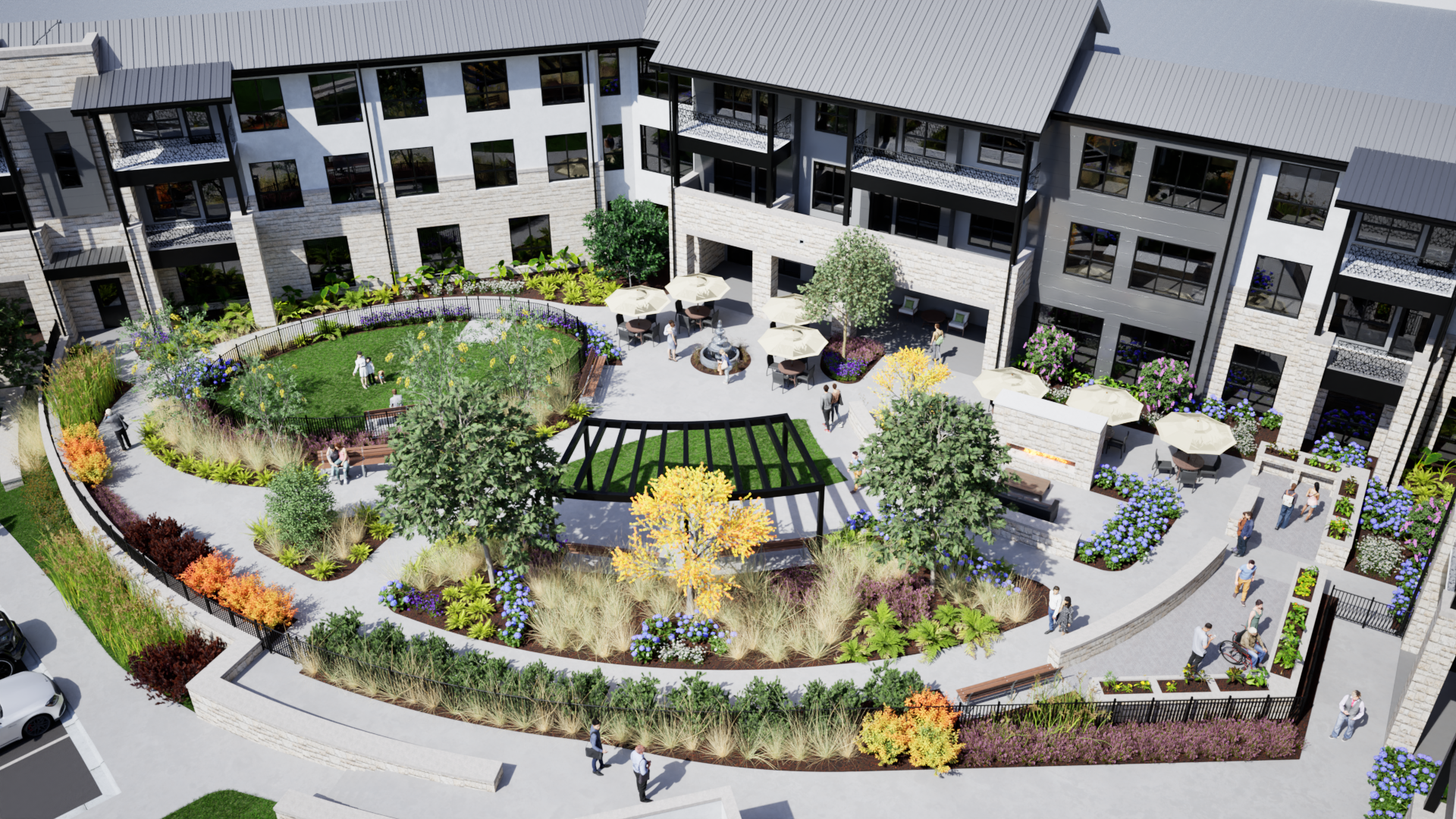Construction Costs Are High, But You Can Save
While inflation has hit the senior housing world, this doesn’t mean you can’t build or renovate a great community. You just need the right materials, the right team, and ability to be flexible and innovative.
Cutting Costs without Sacrificing Quality
Cutting costs on your senior housing project doesn’t necessarily mean cutting corners. We talked to several experts in the field, and here is some of the basic guidance they offered:
You need to have the buy-in of all your players. Get everyone committed early on and be transparent about expectations.
Keep your specs open and promote competition. Try not to be tied to one specific vendor or system. However, realize that the lowest bid may not be the best or the right one. Make sure there are no opportunities for surprises or unexpected expenses down the line – too often, ‘cost creep’ accompanies low bids.
Stay with the basics. For instance, we’re seeing more effort put into outdoor amenity spaces, which generally are less expensive.
Early on, design documents should convey the intent of the building and address any unknowns. Making changes or revisions down the road can be costly.
Don’t get subcontract bids too far in advance. Numbers from today may be much higher in a month or even a week. At the same time, what looks like a good number initially could go higher as you move through the process. The cheapest price likely will have more change orders. Keep your finger on the pulse of costs over time so you can promptly address any budget breakers or other problems.
Good relationships make things easier. Transparent, mutually trusting relationships are more likely to enable you to work reasonably through issues.
It’s valuable to have subcontractors in multiple regions to cut travel costs.
You can’t predict if costs will go up or down, so realize that, for example, square foot costs today maybe different in 6, 10, or 12 months. Try to build some flexibility in your budgets to account for this. Currently, it’s best to budget for 10-15% cost increases.
When you’re looking at costs, consider how labor as well as materials are driving up costs. Realize that staffing shortages and wage hikes have hit the construction and building industries, as well as healthcare and hospitality sectors.
When you’re budgeting, try to keep emotion out of it. Look at things logically and practically. Realize that your vision for the perfect community may have to be scaled back to accommodate budgets and that some design elements or materials just may not be practical.
Find contractors who are engaged in the project. A detailed budget is great, but it is important to find out how into the details they are and how open they’ll be. If they’re not prepared to talk about things like cost drivers and your design intent, they’re probably not engaged in the project.
Don’t overdo bid options – limit this to a few. Realize that features like fancy ceilings and elaborate common spaces will drive up costs and are low-hanging fruit when cuts have to be made. At the same time, don’t automatically make the jump to what’s less expensive. Certain kinds of fencing, for example, may be aesthetically pleasing but is vulnerable to weather-related damage and may have to be replaced sooner or more frequently.
“Use a contractor from the beginning to help with pricing. They have their finger on the pulse of pricing. It is important to get a bead on costs and pricing before you pick up the pencil and start designing.”
These experts are optimistic about the future of senior housing construction. They just urge caution, patience, planning, and the realize the unexpected is to be expected. Marty Hoffey, business development manager for MW Builders, stressed the importance of resisting the urge to make big changes or pivots on direct once you get into the project. These, he said, can be costly and ultimately not add value.
Pi’s Mark Warrick, AIA, offered, “Use a contractor from the beginning to help with pricing. They have their finger on the pulse of pricing. It is important to get a bead on costs and pricing before you pick up the pencil and start designing.” Pi’s Darren Azdell, added, “From the start you have be thinking about systems. Time is money; you don’t want to be starting over or having to redo things because you didn’t conduct thorough planning from the start.”
Changing systems and materials later in the project can make it more expensive rather than saving money. Warrick added, “If contractors come in late, they often don’t understand the systems, what codes are, what’s required, etc. They may end up cutting something to save costs that is code-required.” Azdell also stressed, “Have architects with experience in construction and the type of project you are planning. They likely will understand your needs, the opportunities, the challenges, and the limitations and get you in the right direction.”
“We’ve had to think differently about how we - designers and contractors - work together. When we finally settle on the numbers for the customer, we have to work together much faster and lock in prices.””
From Challenges to Opportunities
Of course, with challenges come opportunities. As Larry Graeve, senior vice president at The Weitz Company, said. “We’ve had to think differently about how we – designers and contractors –work together. When we finally settle on the numbers for the customer, we have to work together much faster and lock in prices.” He added, “We buy direct from the manufacturers and have direct ties to them. We’re saving money that way.” Nonetheless, costs continue to rise and developments such as rising interest rates are affecting the senior housing industry. Graeve said, “Every week we’re getting letters from different manufacturers with price increases, and costs for electricians and electrical work is as much as twice what it was two months ago.”
Pi works closely with contractors and other partners, and we keep up with trends, challenges, regulations, code issues, supply chain issues, and more. Our goal is not only designing beautiful and functional buildings that attract and keep residents, but we also understand the importance of meeting tight budgets and schedules and avoiding surprise costs and delays.
Contact us here or call us at 512-231-1910.

















